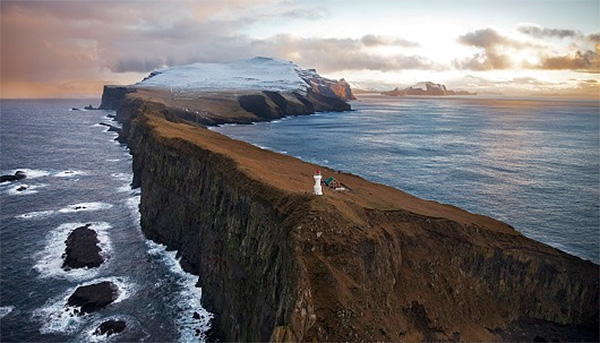Historically, mercury has been of great importance to the range of some of the lighthouses of the Danish Maritime Authority – the lighthouse lens was floating on a bath of mercury in order to reduce friction to a minimum and to increase the speed of the lens and the intensity of the light.
Five-year phase-out
But, according to general knowledge, mercury is poisonous and harmful to the environment. Therefore, the Danish Maritime Authority has been striving to phase out mercury, and in 2009 it was agreed with the Danish Working Environment Authority that all Danish lighthouses should be free of mercury by 2014.
Now, we have succeeded. A solution has been reached that could, on the one hand, be achieved within the timeframe and, on the other hand, meet the nautical requirements made – nine of the lighthouses should still be in operation. Consideration should also be paid to the fact that several of the lighthouses are protected or worthy of preservation.
Different lighthouses require different solutions
In some of the lighthouses, it was chosen to change to modern, high-intensive LED (Light Emitting Diode) lights with a range of approx. 18 nautical miles, a little more than 33 km. The LED light was a supplier off-the-shelf item, but for protected lighthouses and lighthouses of great culture-historical and local-historical interest a mechanical solution was requested so as to keep the rotating and sweeping light. That turned out to be more complicated. The solution was required not to destroy the original design and not to be more expensive than the LED solution, and it had to be approved by the Danish Agency for Culture. Finally, it was a challenge that the design of each individual lighthouse was so different that a solution developed for one lighthouse could not immediately be used for another lighthouse.
Cooperation between DTU and Service and Maintenance Centre Korsoer
The mechanical bearing system was developed in close cooperation between the Technical University of Denmark (DTU) and the Danish Maritime Authority’s Service and Maintenance Centre Korsoer. Nakkehoved Lighthouse at Gilleleje was the first lighthouse on which the solution was tested in 2013. The result was positive and, during the following years, systems were developed for Lyngvig Lighthouse, Skagen Lighthouse, Blåvand Lighthouse and, most recently in September 2014, the system has been implemented in Myggenæs Lighthouse on the Faroe Islands.
Denmark in the lead
Head of the Centre and Senior Engineer Aids to Navigation’ Jørgen Royal Petersen has been the coordinator of the project at the Danish Maritime Authority. He is satisfied:
“I am very pleased that it has been possible to find such a gentle and economical solution. Each lighthouse has contained 12-15 litres of mercury so the phasing out has a great impact on the environment. Only a few other countries have implemented partial phase-outs, but not such planned and total phase-outs as the one that has now been finalised in Denmark. Other countries are very attentive to what has been done in Denmark and, on several occasions, I have had the possibility of presenting the Danish solution to our colleagues abroad and other stakeholders. It is a milestone in the history of lighthouses.”
Source and Image Credit: DMA
In the beginning, I was explicit with you propecia before and after has changed my life. It has become much more fun, and now I have to run. Just as it is incredible to sit.































































